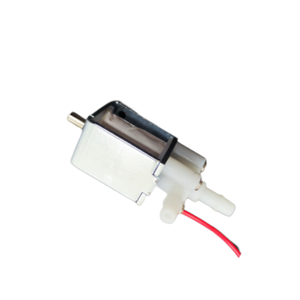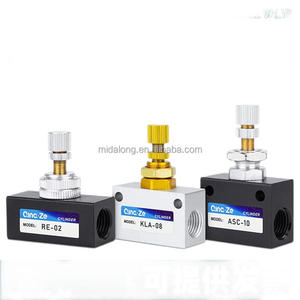
All categories
Featured selections
Trade Assurance
Buyer Central
Help Center
Get the app
Become a supplier

(162 products available)













































The idle air speed control valve sensor is a vital part of the electronic control system of the engine. It is in charge of monitoring and controlling the air entering the engine during idle, which helps maintain a stable engine idle speed. Below are some common types of idle air speed control valve sensor assemblies:
1. Stepper Motor IAC Valves
These valves have a motor with coils that are arranged like a 2-phase motor. The valves are responsible for controlling the engine's idle speed by opening and closing in small steps. They are commonly used in I4 and V6 engine layouts. Their main advantages include precise control of idle speed, quick response to changes in engine load, and stable idle speed control.
2. DC Motor-Controlled IAC Valves
They are commonly used in vehicles with V8 engines or high-performance engines. These valves control the idle speed using a motor to turn the valve positioner. Their main advantages include smooth control of idle speed adjustment, good stability of idle speed control, and flexibility to be tuned for specific engine characteristics.
3. PWM-Controlled IAC Valves
These valves are responsible for controlling the engine's idle speed by using pulse-width modulation signals. As a result, they allow for more precise control of the valve opening and air flow. They are commonly used in vehicles with small or large turbocharged engines. Their main advantages include very precise control of idle speed, quick response to changes in engine load, and ability to integrate with other engine control strategies.
4. Linear IAC Valves
They are responsible for controlling the engine's idle speed by adjusting the air flow in a linear manner. As a result, they allow for smooth and gradual changes in idle speed. These valves are commonly used in vehicles with hybrid or electric vehicles and in combination with other systems. Their main advantages include very smooth and consistent idle speed control, good integration with other systems, and ability to fine-tune the valve for specific requirements.
Voltage: The ISC valve requires a voltage to function, and its required voltage is usually indicated in the specifications. The voltage should be stable to ensure consistent operation.
Current Draw: The current draw of the ISC valve is also mentioned in the specification. The current should be within the required specification, as it affects the valve's operation and can cause damage to the engine control unit.
Frequency of Operation: The frequency of operation is specified in hertz and indicates how often the valve opens and closes. This is important for maintaining the desired engine speed and requires that the frequency be stable.
Flow Capacity: This is the amount of air the valve can control, measured in liters per minute. Flow capacity is important for maintaining the desired air-fuel mixture and should be within the required specification to ensure consistent operation.
Operating Pressure: The pressure at which the valve operates, measured in pascals, is critical for controlling engine speed. Operating pressure should be stable to ensure consistent operation and to be within the required specification.
Operating Temperature: The temperature range at which the valve is required to operate is also specified. This is important for maintaining engine speed, and the valve must be within the specified temperature range to ensure consistent operation.
Response Time: The time it takes for the valve to open and close is measured in milliseconds. This is important for maintaining engine speed, and the valve must be within the specified response time to ensure consistent operation.
The idle air control valve is an important part of the engine management system. It controls the air entering the engine, affecting the idle speed. Like every other part of the engine, it requires regular maintenance to ensure it functions optimally. Below are some of the recommended idle air control valve maintenance tips:
The following factors should be considered when choosing an proper IAC valve for a vehicle.
First and foremost, it is important to read the manufacturer's manual for specific instructions. However, below are some general steps for replacing the IAC valve:
Gather the necessary tools and materials
New idle air control valve, socket set, screwdrivers, torx bit, pliers, electrical cleaner, clean rags, safety glasses, gloves, wire brush, gasket scraper, silicone sealant, torque wrench, and gasket.
Disconnect the battery
To prevent electrical shorts and damage to the vehicle's electrical system, the mechanic or DIYer must first disconnect the negative cable from the vehicle's battery.
Locate the IAC valve
The DIYer or mechanic should locate the IAC valve, usually found on the throttle body and connected to the air intake system.
Remove the IAC valve
With a screwdriver or socket set, the DIYer should remove the bolts or screws securing the valve. After that, the IAC valve should be carefully pulled off the mounting surface.
Clean the mounting surface
The idle air control valve mounting surface should be cleaned using a wire brush, electrical cleaner, and a gasket scraper. This will ensure a clean surface for the new valve.
Install the new IAC valve
The new idle air speed control valve should be aligned with the mounting holes and pressed gently onto the throttle body. The valve should be secured using bolts or screws and then tightened to the manufacturer's specified torque.
Reconnect the IAC valve electrical connector and vacuum lines
After installing a new IAC valve, the electrical connector and any vacuum lines should be reconnected. The connections should be secure to ensure proper valve operation.
Reconnect the battery
Once the new valve has been installed successfully, the mechanic or DIYer should reconnect the vehicle's battery. The IAC valve should be plugged into the electrical system.
Start the vehicle and check the IAC valve operation
Finally, the mechanic or DIYer should start the car and allow it to run for a few minutes. They should then check the IAC valve's operation, ensuring it responds correctly to changes in idle air control demands.
Q1: What is an idle air control valve sensor?
A1: An idle air control valve sensor controls the air coming into the engine. It helps control the engine's idle speed by opening or closing the valve. When the valve is closed, more air is sent into the engine, increasing the RPM. Conversely, when the valve is opened, less air is sent into the engine, decreasing the RPM.
Q2: What causes a bad idle air control valve sensor?
A2: Several factors can cause a faulty idle air control valve sensor. These include wear and tear, carbon buildup, electrical issues, and moisture damage. The IACV can also be damaged by a faulty PCV valve or a vacuum leak from the intake manifold.
Q3: Can users clean the idle air control valve sensor?
A3: Yes, it is possible to clean the idle air control valve. Use an IACV cleaner or carburetor cleaner and a soft cloth to remove any deposits or dirt. Cleaning the valve regularly can help prevent carbon buildup, thus prolonging the valve's life.
Q4: How long does an idle air control valve sensor last?
A4: The standard lifespan of an idle air control valve is between 50,000 to 100,000 miles. However, the IACV can last longer with proper maintenance and care. Factors such as driving conditions and engine cleanliness can also affect the valve's lifespan.
Q5: Can the engine run without an idle air control valve sensor?
A5: No, the engine cannot run without an idle air control valve sensor. The IACV is crucial, especially in fuel-injected engines, for maintaining the desired idle speed. If the valve is faulty or missing, the engine may stall, run erratically, or have a rough idle.